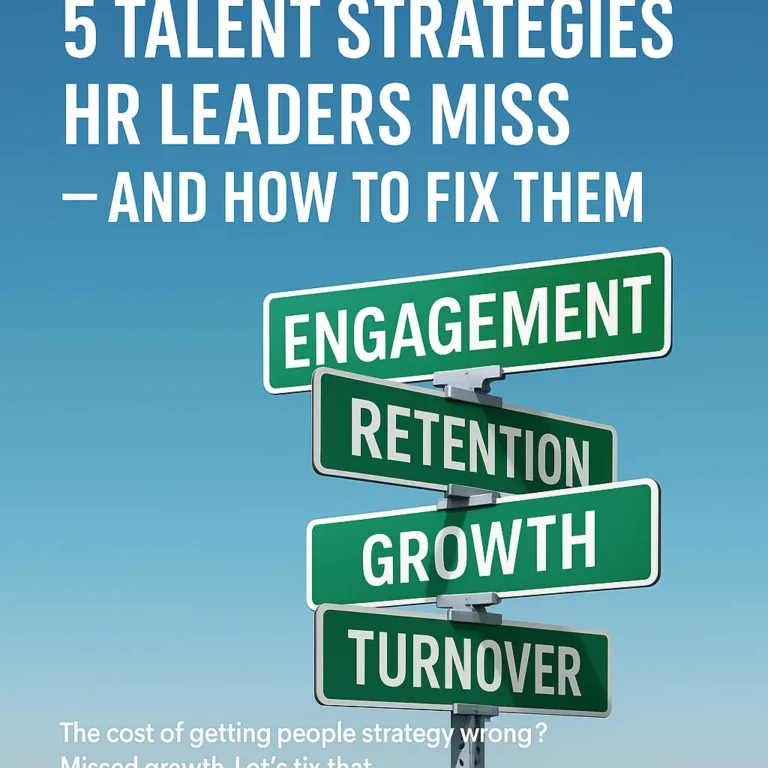What is a true leader?
As an HR consultant for the past 17 years and partner at my company, a firm dedicated to providing more management horsepower for businesses, I’ve seen many different kinds of leaders, some highly effective and some less so.
I think one of the key traits of a true leader is the ability to get things done through other people. If no one is following you, even if you have the title, you’re not a leader. The effective leaders are the ones who empower others.
Empowering Your Team
Steve Jobs famously said, “It doesn’t make sense to hire smart people and tell them what to do; we hire smart people so they can tell us what to do.” That is the epitome of viewing your people as true business partners and not as subordinates to be bossed around.
The key to leadership that empowers is trust. If we surround ourselves with smart people developing new ideas, then we need to trust our instincts and recognize that we have surrounded ourselves with them for a reason. That means sometimes we have to get out of our comfort zone and try new things.
Letting Go
When I’ve seen business owners fail, it has been because they struggle to let go and feel like they need to control everything in their business.
Years ago, a gentleman called me because he was growing his business and wanted to redo the commission structure for his sales team. This is usually a good thing. In this case, it was not. He wanted to redo the commission structure to pay them less.
I asked him why.
He told me that his salespeople were too good at their jobs. “By the end of the year, some of them are going to be earning more than me,” he added.
I paused for a moment and said, “A good salesperson is worth their weight in gold. Why do you want to discourage them from selling?”
He was so focused on the idea that being a leader meant he had to earn the most that he failed to see that trusting his salespeople to do their jobs and rewarding them accordingly was building his business. He was looking at his payday, not his business growth. That comes back to trust. He wasn’t trusting himself or his people to run his business the way it needed to be run in order to grow.
There is no end to that story because I ended up not working with him. I walked away from the opportunity because I was completely against his philosophy.
Learning To Take (Calculated) Risks
But it’s not enough to simply trust. When you surround yourself with good people bringing good ideas, there are going to be times you need to take calculated risks.
Leaders need to be able to look at these opportunities and decide that a calculated risk is a risk they’re willing to take to grow their business. Too many small business owners get into a trap where they’re afraid to get outside of their personal comfort zone, and that is not a place from which a business can grow.
Oftentimes, I find that owners won’t take a risk because, deep down, they don’t trust the idea or the person who brought the idea. That’s why risk-taking and trust go hand in hand.
A great example is the work that my business does with our outside marketing firm. Marketing is a calculated risk. We put aside the money for it and hope it’s going to work and grow our business. We trust the leader of the marketing business we work with, and over the years she has certainly proven herself. When she has an idea we don’t understand, we go for it. We haven’t been sorry yet.
This is a simple example, but it comes back to calculated risk. I realize I need to do marketing to grow my business, and I’m not a marketer nor do I want to be. So I have to trust.
So many business owners get stuck in the idea that they have to do everything for their business, which really inhibits their ability to actually grow it.
Creating Incentives
The final piece to employee-empowering leadership is compensation.
If we’re going to expect innovative and entrepreneurial behaviors from the people we surround ourselves with, we need to be willing to incentivize those behaviors. As we get up to the higher levels of the organization, bonuses should be driven more by company performance than by individual goals to incentivize leaders to get results for the company.
A well-designed executive compensation system will galvanize leaders because they will be focusing on the goals of the organization as a whole. Trust them to get the job done and then incentivize them to do it. The reward should be commensurate with the amount of trust we’ve placed in them to get business results for us. At that level, when we’re trusting people to grow the business, a coffee mug with a logo isn’t going to cut it.
Ultimately, leadership comes down to creating a set of ideals within an organization, putting the values and goals in place with the assistance of trusted advisors, and then inspiring them to go achieve the results.
This article originally appeared on Forbes.com.


